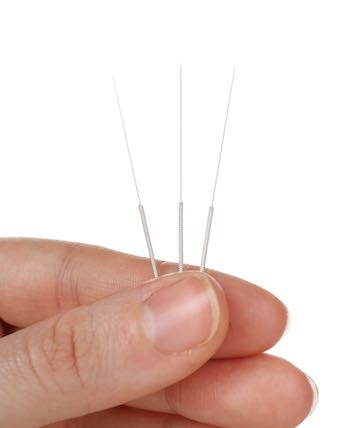Acupuncture ICD-10 Insurance Billing Codes Made Easy
HealthCMi on 17 February 2015.
- See more at: http://www.healthcmi.com/Acupuncture-Blog/1260-acupuncture-icd-10-insurance-billing-codes-made-easy#sthash.TubZsswQ.dpuf
The new ICD-10 acupuncture insurance billing diagnosis codes are mandatory beginning October 2015.  This system is very different from the old ICD-9 diagnosis codes. Today, let’s go over some simple ways to convert to the new acupuncture insurance billing diagnosis codes. Learn special details in the HealthCMi acupuncture continuing education course entitled Acupuncture Billing #1.
This system is very different from the old ICD-9 diagnosis codes. Today, let’s go over some simple ways to convert to the new acupuncture insurance billing diagnosis codes. Learn special details in the HealthCMi acupuncture continuing education course entitled Acupuncture Billing #1.
A quick background is helpful. The ICD-10 was developed by the WHO, World Health Organization. The National Center for Health Statistics (HCHS) under the auspices of the Centers for Disease Control (CDC) is responsible for maintenance of this system. However, it is the Centers for Medicare & Medicaid Services (CMS) that develops and updates the ICD-10 diagnosis codes. The CMS has a downloadable list of all the new health insurance billing codes. The CMS “tabular list” downloadable PDF is the file that contains a quick an easy reference guide to the codes.
Pain codes are usually reimbursed by insurance companies. General internal medicine conditions such as lupus, IBS, infertility, etc... are often rejected. The new ICD-10 code set does not change this bias. It is up to individual health insurance providers to determine the diagnosis codes that are deemed reimbursable for licensed acupuncturists.
There may be a bit of a of a guessing game in the very beginning of ICD-10 implementation. How can this be? The old ICD-9-CM codes ranged from 3-5 characters. There are specific conventions developed to determine whether a 3, 4 or 5 digit code is reimbursable in the old ICD-9 system. The new ICD-10 system consists of 3-7 characters. The dust has not settled on whether some 3, 4 and 5 digit codes will be acceptable over more lengthy 6 and 7 digit codes. No worries, let’s take a look at how to make sure there is more certainty in the process. We start by looking a why certain codes are more commonly reimbursed than others.
There are several insurance companies, including Cigna, that accept only a limited number of diagnoses. Currently, Cigna readily reimburses for neck pain, low back pain, nausea due to chemotherapy and nausea due to morning sickness. Anthem (Blue Cross-Blue Shield) tends to reimburse for a wider variety of diagnosis codes. However, their clinical utilization review guideline published in 2013 stipulates:
The use of acupuncture is considered medically necessary for treatment of nausea and vomiting associated with surgery, chemotherapy, or pregnancy provided the individual does not have either of the following:
• Pacemaker; or
• Automatic implantable cardioverter-defibrillator (AICD)
Anthem also stipulates:
The use of acupuncture is considered medically necessary for treatment of painful chronic osteoarthritis of the knee or of the hip, if all of the following criteria are met:
• Radiographic evidence of osteoarthritis; and
• Pain significantly affecting daily activity and function.
• Absence of ALL of the following: Other metabolic, inflammatory, or infectious causes of arthritis; Pacemaker or AICD; No plans for total joint replacement
Next, the official Anthem guidelines stipulate, “Acupuncture for any other indication, including but not limited to, the treatment of pain other than specified above, is considered not medically necessary.” This goes towards explaining why some pain related diagnosis codes are rejected. That said, most pain codes are reimbursed by Anthem whereas Cigna tends to adhere to strict and narrow guidelines.
Neck pain is the first place to start. Most insurance carriers will not balk at the use of cervicalgia as a diagnostic specification. The new cervicalgia ICD-10 code is M54.2, a simple 4 character alphanumeric code. There is no extra digit ambiguity in this case. Sciatica is another story. The basic ICD-10 sciatica code is M54.3. This might be denied because there are five character versions of this code:
M54.30 Sciatica, unspecified side
M54.31 Sciatica, right side
M54.32 Sciatica, left side
This is an example of a new feature in the ICD-10 system. Laterality may be specified. In this instance, the 5th character designates an unspecific side with a 0, right with a 1 and left with a 2. It is probable that a five character code is going to cause less problems than the four character code. Nobody wants to rebill! 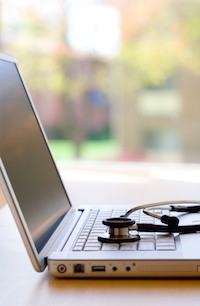
Low back pain is perhaps one of the most universally accepted diagnoses. Low back pain is M54.5 and includes loin pain and lumbago NOS. The NOS indication means “not otherwise specified” and refers to the generality of the unspecified disorder. Lumbago NOS is understood as generalized low back pain, unspecified. The M54.5 low back pain code excludes low back strain, which is an S39.012 ICD-10 code. All of these codes can be easily found in the downloadable “tabular list” document from the CMS. The download is free and searchable because it is in the PDF format.
PDF documents are familiar to acupuncturists using the HealthCMi acupuncture CEU system for acupuncture CEU and acupuncture PDA online courses. Most HealthCMi course content is distributed in PDF format. PDF reader software is free and can be downloaded at Adobe’s website. If you are viewing PDFs on the Google Chrome web browser, you may only see the first page of the document. If this occurs, go to Chrome’s settings and enable the PDF plugin.
Acupuncture services are often reimbursed for the treatment of headaches. The R51 Headache ICD-10 code includes facial pain NOS but excludes atypical face pain (G50.1), migraine and trigeminal neuralgia (G50.0). The migraine code (G43) requires extra character specificity and excludes headache NOS (R51) and lower half migraine (G44.00). The following are a few of the common migraine ICD-10 codes:
G43.009 Migraine without aura, not intractable, NOS
G43.109 Migraine with aura, not intractable, NOS
G43.409 Hemiplegic migraine, not intractable, NOS
G43.709 Chronic migraine without aura, not intractable, NOS
G43.909 Migraine NOS
The list for migraines is quite lengthy but a few codes should meet most office needs. It is expected that most carriers will continue to reimburse for the treatment of headaches and migraines. There are codes for conditions commonly treated at acupuncture clinics such as G47.00 (insomnia NOS) but, not being a pain code, it may get rejected.
The following is a short list of some other handy ICD-10 codes:
M76.50 Patellar tendinitis, unspecified knee
M76.51 Patellar tendinitis, right knee
M76.52 Patellar tendinitis, left knee
M05.33 Rheumatoid arthritis
M15.9 Polyosteoarthritis, unspecified (generalized osteoarthritis NOS)
M16.10 Unilateral primary osteoarthritis, unspecified hip
M54.40 Lumbago with sciatica, unspecified side
M54.41 Lumbago with sciatica, right side
M54.42 Lumbago with sciatica, left side
M54.6 Pain in the thoracic spine
M54.9 Dorsalgia, unspecified (backache NOS, back pain NOS)
H57.1 Eye Pain
R10.2 Pelvic and perineal pain
R07.0 Throat pain
K08.8 Tooth pain
F45.42 Pain disorder exclusively related to psychological factors
R51 Headache NOS
G44.019 Cluster headache syndrome NOS
M75.20 Bicipital tendinitis, unspecified shoulder
S43.429 Sprain of unspecified rotator cuff capsule
M75.00 Adhesive capsulitis, unspecified shoulder (frozen shoulder)
M77.20 Periarthritis, unspecified wrist
G56.00 Carpal tunnel syndrome, unspecified upper limb
M72.2 Plantar fascial fibromatosis (plantar fasciitis)
M79.7 Fibromyalgia
M54.1 Brachial radiculitis NOS
M54.1 Lumbosacral radiculitis NOS
M79.601 Pain in right arm
M79.602 Pain in left arm
M79.603 Pain in arm, unspecified
M79.604 Pain in right leg
M79.605 Pain in left leg
M79.606 Pain in leg, unspecified
M79.609 Pain in unspecified limb
M79.643 Pain in unspecified hand
M79.646 Pain in unspecified finger(s)
M79.673 Pain in unspecified foot
M79.676 Pain in unspecified toe(s)
M77.10 Lateral epicondylitis, unspecified elbow (tennis elbow)
Non-specific codes regarding laterality such as M79.643 (pain in unspecified hand) may be adequate. However, time will tell whether or not the codes must specify left or right. Pain in the left hand is M79.642 and pain in the right hand is M79.641.
- See more at: http://www.healthcmi.com/Acupuncture-Blog/1260-acupuncture-icd-10-insurance-billing-codes-made-easy#sthash.TubZsswQ.dpuf

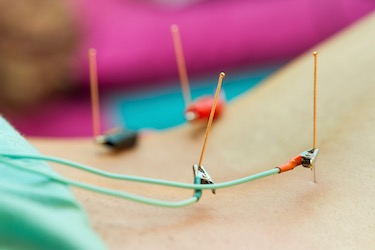
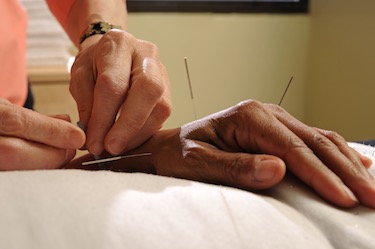


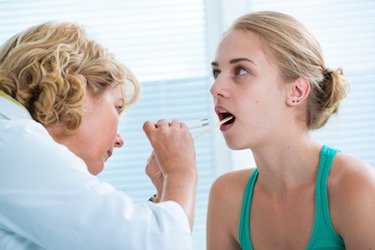 Doctors from the Stanford University School of Medicine conclude that acupuncture is “feasible, well tolerated, and results in improved pain and earlier return of diet postoperatively.”
Doctors from the Stanford University School of Medicine conclude that acupuncture is “feasible, well tolerated, and results in improved pain and earlier return of diet postoperatively.”